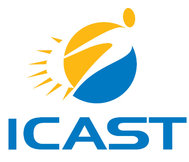

Rehabilitation of multifamily properties has always been a difficult decision for the owner, and to make green upgrades is a tougher call because of the reputation of green upgrades being costly. The upfront cost, hassle of managing the rehab, issue of split incentive, i.e., owner pays for the upgrades while the tenants receive the benefits, often leads owners to not even consider a rehab — let alone green upgrades. In reality though, there is a smarter way to rehab multifamily properties that is hassle-free and cost-effective, with ample benefits flowing to the owner including increase in value of property, lower O&M costs, improved occupancy and lower turnover.
Besides the obvious sources: cash reserves and cash from operations, there are other financing options including:
1. Property Assessed Clean Energy (PACE) is a means of financing green upgrades through municipal governments who can invest municipal bond funds or attract private capital for the green upgrades. The investment has to be repaid within 20 years through an assessment added to the property’s tax bill. PACE financing stays with the property upon sale of the property and is easy to share with tenants. PACE financing does not show on the balance sheet of the property.
2. Energy Performance Contract (EPC) uses the savings of the green upgrades to pay for the cost of the upgrades, i.e., the utility cost savings are guaranteed by an ESCO (Energy Service Company) and are sufficient to pay for the project financing over the term of the contract. After the contract ends, all cost savings accrue to the owner. EPCs are difficult to execute on individually metered MF properties. Financing for EPC is through private capital sources and is typically off-balance sheet.
3. Power Purchase Agreement (PPA) is essentially an EPC contract, except it is for energy generation (e.g., Solar). The MF owner, i.e., energy buyer, contracts to buy the energy generated by the seller (owner of the energy generation system), by entering into a PPA. Buyers typically pay no up-front cost (capital is provided by the seller), and purchase the power generated for an agreed-upon price for the duration of the contract. The seller installs, operates and maintains the system typically sited at the buyer’s property. The key advantages of a PPA are that the price of energy is typically lower than paid to the utility company and does not fluctuate under the contract, and can help with financial planning.
4. On-Bill Financing from your local utility. The utility may pay for the green upgrades and collect the repayment in their utility bill or the utility merely collects for other financiers. The funds can be debt or off-balance sheet, but unfortunately is not available in most locations.
The above options have one drawback: they only finance the green portion of the rehab i.e. energy efficiency, renewable energy, water conservation and perhaps indoor air quality improvements. This next option typically funds the entire rehab:
5. Debt from Banks,
Credit Unions, CDFI’s or Agencies (HUD, FHA, USDA-RD, State HFA’s).
Besides these financing options, there are several incentives available to owners of MF properties that help pay for or reduce the cost of the Smart Rehab.
These incentives often cover the additional cost of the green piece or subsidize it enough to bring the payback down to a few years, thus making it a no-brainer to decide in favor of a Smart Rehab.
Triple Bottom-Line Foundation (www.TBLFund.org) is a U.S. Dept. of Treasury certified Community Development Financial Institution (CDFI) with a single focus: providing access to financing for smart rehab to owners of MF properties.